One consistent piece of feedback we receive from our guests is that Getaway is the perfect place, far from the light pollution of the city, to see the stars and constellations. Here’s what you can look forward to seeing in the sky this month on your next escape to nature.
December 2023
Geminids Meteor Shower.
The Geminids is the king of the meteor showers. It is considered by many to be the best shower in the heavens, producing up to 120 multicolored meteors per hour at its peak. It is produced by debris left behind by an asteroid known as 3200 Phaethon, which was discovered in 1982. The shower runs annually from December 7-17. It peaks this year on the night of the 13th and morning of the 14th. This should be an great year for the Geminids. The nearly new moon (on December 12) means dark skies for what should be an excellent show. Best viewing will be from a dark location after midnight. Meteors will radiate from the constellation Gemini, but can appear anywhere in the sky.
Ursids Meteor Shower.
The Ursids is a minor meteor shower producing about 5-10 meteors per hour. It is produced by dust grains left behind by comet Tuttle, which was first discovered in 1790. The shower runs annually from December 17-25. It peaks this year on the the night of the 21st and morning of the 22nd. The waxing gibbous moon will block out most of the faintest meteors this year. But if you are patient, you should still be able to catch a few good ones. Best viewing will be just after midnight from a dark location far away from city lights. Meteors will radiate from the constellation Ursa Minor, but can appear anywhere in the sky.
December Solstice.
The December solstice occurs on December 22nd. The South Pole of the earth will be tilted toward the Sun, which will have reached its southernmost position in the sky and will be directly over the Tropic of Capricorn. This is the first day of winter (winter solstice) in the Northern Hemisphere
Full Moon.
The Moon will be located on the opposite side of the Earth as the Sun and its face will be will be fully illuminated. This full moon was known by early Native American tribes as the Cold Moon because this is the time of year when the cold winter air settles in and the nights become long and dark. This moon has also been known as the Long Nights Moon and the Moon Before Yule.

November 2023
Jupiter at Opposition
On November 3rd, the gas giant Jupiter will reach opposition, aligning perfectly with the Earth and the Sun. This alignment offers the best opportunity to observe and photograph Jupiter throughout the year. Its largest moons—Io, Europa, Ganymede, and Callisto—will be visible through binoculars or a telescope. Jupiter’s distinct cloud bands and the iconic Great Red Spot will also be more prominent, providing a mesmerizing view of this colossal planet.
Taurids Meteor Shower
Prepare for an amazing celestial display on November 4th and 5th—the Taurids Meteor Shower. Although not as prolific as other meteor showers, the Taurids are known for producing fireballs, which are exceptionally bright meteors. Find a cozy spot away from city lights, lie back, and let the Taurids light up the night sky with their brilliant streaks.
Uranus at Opposition
On November 13th, Uranus, the seventh planet from the Sun, will reach opposition. This event allows for a unique opportunity to observe Uranus as it will be at its closest point to Earth, making it appear brighter and more visible. With the aid of a telescope, you might even be able to distinguish its blue-green hue and possibly some of its moons.
New Moon
Coinciding with Uranus’ opposition on November 13th, the moon will enter its new phase. This means the night sky will be exceptionally dark, ideal for stargazing and observing deep-sky objects without any interference from moonlight. Take advantage of this period to explore the vastness of the universe and discover celestial wonders.
Leonids Meteor Shower
On November 17th and 18th, get ready for the annual Leonids Meteor Shower, known for its bright and swift meteors. While the Leonids typically produce around 15 meteors per hour, they are famous for occasional meteor storms with hundreds or thousands of meteors per hour. Although 2023 may not be a storm year, witnessing the Leonids is always a treat. Find a spot with an unobstructed view of the sky, and enjoy this celestial spectacle.
Full Moon
On November 27th, the full moon will grace the night sky, illuminating the world with its gentle light. Known as the Beaver Moon, this full moon is associated with the time when beavers build their winter dams. Take a moonlit walk, embrace the beauty of the full moon, and connect with the natural rhythms of the world around you.
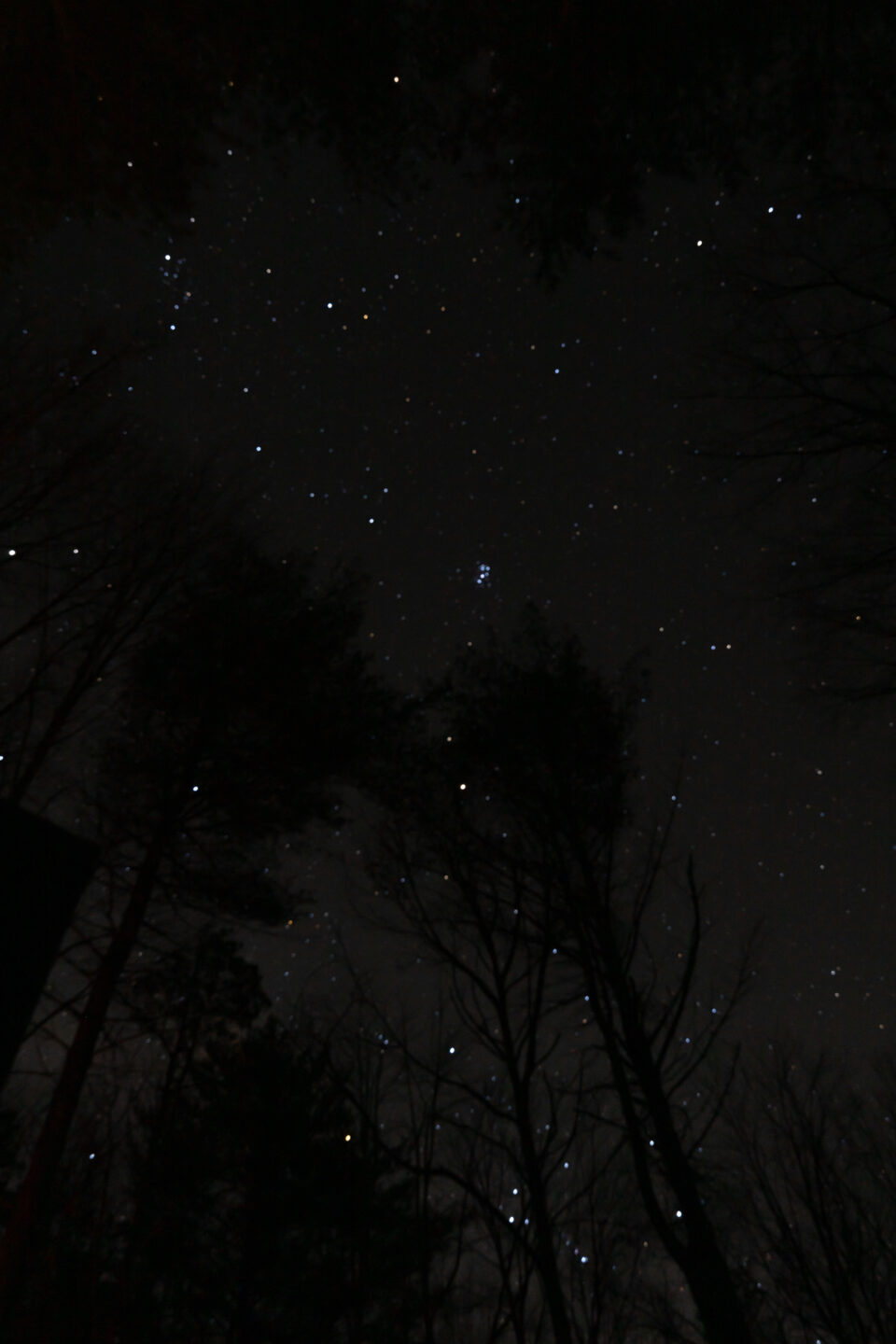
October 2023
Draconids Meteor Shower
The Draconids is a minor meteor shower producing only about 10 meteors per hour. It is produced by dust grains left behind by comet 21P Giacobini-Zinner, which was first discovered in 1900. The Draconids is an unusual shower in that the best viewing is in the early evening instead of early morning like most other showers. The shower runs annually from October 6-10 and peaks this year on the the night of the the 8th and morning of the 9th. The second quarter moon will be visible in the early morning but shouldn’t interfere too much. Best viewing will be in the early evening on October 8th and 9th from a dark location far away from city lights. Meteors will radiate from the constellation Draco, but can appear anywhere in the sky.
Annular Solar Eclipse
An annular solar eclipse occurs when the Moon is too far away from the Earth to completely cover the Sun. This results in a ring of light around the darkened Moon. The Sun’s corona is not visible during an annular eclipse. The eclipse path will begin in the Pacific Ocean off the coast of southern Canada and move across the southwestern United States and Central America, Columbia, and Brazil. A partial eclipse will be visible throughout much of North and South America on October 14.
Orionids Meteor Shower
The Orionids is an average shower, taking place on October 20th and 21st, producing up to 20 meteors per hour at its peak. It is produced by dust grains left behind by comet Halley, which has been known and observed since ancient times. The shower runs annually from October 2 to November 7. It peaks this year on the night of October 20 and the morning of October 21. The first quarter moon may block some of the dim meteors in the evening, but it will set shortly after midnight. This will leave dark skies for what could be a good morning show. Best viewing will be from a dark location after midnight. Meteors will radiate from the constellation Orion, but can appear anywhere in the sky.
Venus at Greatest Western Elongation
The planet Venus reaches greatest eastern elongation of 46.4 degrees from the Sun on October 23. This is the best time to view Venus since it will be at its highest point above the horizon in the morning sky. Look for the bright planet in the eastern sky before sunrise.
Full Moon
The Moon will be located on the opposite side of the Earth as the Sun and its face will be will be fully illuminated on October 28th. This phase occurs at 20:25 UTC. This full moon was known by early Native American tribes as the Hunters Moon because at this time of year the leaves are falling and the game is fat and ready to hunt. This moon has also been known as the Travel Moon and the Blood Moon.

September 2023
New Moon
On September 15th, the Moon will be located on the same side of the Earth as the Sun and will not be visible in the night sky. This phase occurs at 01:41 UTC. This is the best time of the month to observe faint objects such as galaxies and star clusters because there is no moonlight to interfere.
September Equinox.
The September equinox occurs at 06:43 UTC on September 23. The Sun will shine directly on the equator and there will be nearly equal amounts of day and night throughout the world. This is also the first day of fall (autumnal equinox) in the Northern Hemisphere and the first day of spring (vernal equinox) in the Southern Hemisphere.
Full Supermoon.
On September 29 the Moon will be located on the opposite side of the Earth as the Sun and its face will be will be fully illuminated. This phase occurs at 09:59 UTC. This full moon was known by early Native American tribes as the Corn Moon because the corn is harvested around this time of year. This moon is also known as the Harvest Moon. The Harvest Moon is the full moon that occurs closest to the September equinox each year. This is also the last of four supermoons for 2023. The Moon will be near its closest approach to the Earth and may look slightly larger and brighter than usual.
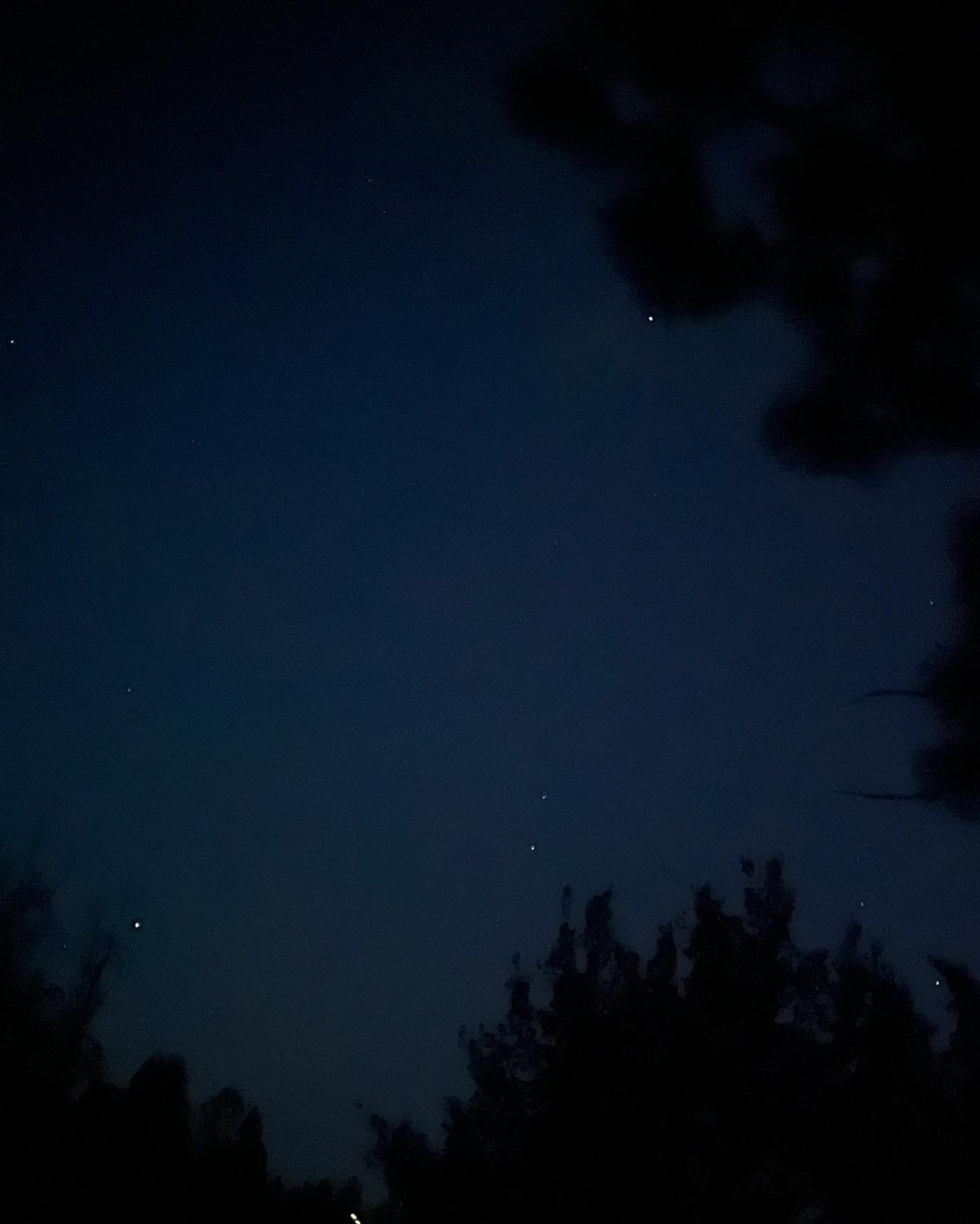
August 2023
Full Moon
On August 2nd, the full moon will grace the night sky, casting its gentle light over the landscape. Known as the Sturgeon Moon, this moon received its name from Native American tribes who associated it with the abundance of sturgeon fish during this time of year. Take a moment to appreciate the serene beauty of the moon as it illuminates the world around you.
Perseids Meteor Shower
Prepare for one of the most spectacular meteor showers of the year—the Perseids. From August 11th to 13th, the night sky will come alive with shooting stars as the Earth passes through the debris left behind by Comet Swift-Tuttle. Find a spot away from city lights, lie back, and enjoy the breathtaking display as the Perseids light up the heavens above.
New Moon
August 18th brings a new moon, offering a pristine canvas for stargazing enthusiasts. With the absence of moonlight, the sky becomes a playground for celestial exploration. Take this opportunity to seek out constellations, planets, and distant galaxies. Let the quiet beauty of the night sky captivate your imagination.
Neptune at Opposition
August 29th presents a unique opportunity to observe the distant planet Neptune. As it reaches opposition, Neptune will be at its closest approach to Earth, making it more visible and easily observable. Although challenging to spot without a telescope, the chance to witness this enigmatic ice giant is an experience worth pursuing.
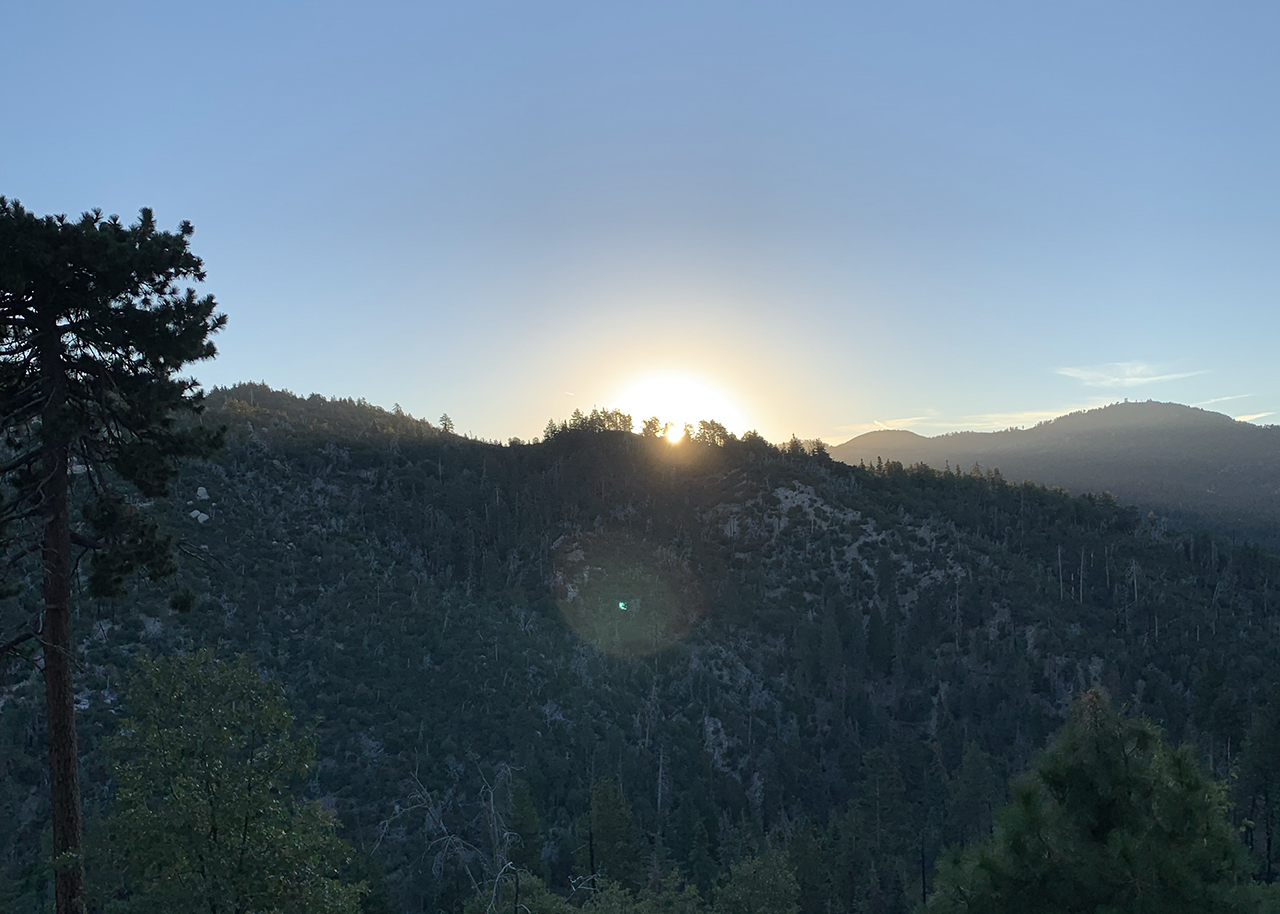
July 2023
Full Moon
Prepare to witness the luminous Buck Moon on July 3rd. Named by Native American tribes for the time when male deer start growing their antlers, this full moon radiates a warm glow across the landscape. Take a stroll outside your cabin and let the moonlight guide your path as you embrace the tranquility of nature.
Delta Aquarids Meteor Shower
In the late hours of July 28th and into the early morning of July 29th, keep your eyes on the skies for the Delta Aquarids meteor shower. Although not as prolific as some other meteor showers, the Delta Aquarids still offer a chance to witness shooting stars streaking across the heavens. These meteors are remnants of the comet 96P/Machholz and are known for their speed and brightness. Find a comfortable spot, away from city lights, and allow yourself to be captivated by nature’s own fireworks display.
New Moon
On July 10th, the moon will transition into its new phase, cloaking the night sky in darkness. Embrace the absence of moonlight and embrace the stars in all their glory. Take this opportunity to explore the constellations, trace their mythical stories, and feel a sense of wonder beneath the celestial canopy.
Jupiter at Opposition
July 24th marks a significant astronomical event—the opposition of the gas giant Jupiter. This means that Jupiter, Earth, and the Sun will align, making the planet appear exceptionally bright and visible throughout the night. With its distinctive bands and four largest moons, Jupiter is a sight to behold. Don’t forget to grab a telescope and observe this colossal planet, reminding yourself of the sheer magnitude and beauty of our universe.

June 2023
Full Moon
On June 4th The full moon will grace the night sky, providing a beautiful natural illumination. Known as the Strawberry Moon, this full moon got its name from the Algonquin tribes who associated it with the time for harvesting wild strawberries. Take a moment to step outside and admire the ethereal glow it casts over the landscape.
Annular Solar Eclipse
Mark your calendars for June 10th! This month, we’ll be treated to an extraordinary celestial event—an annular solar eclipse. During this rare occurrence, the Moon will pass directly in front of the Sun, creating a mesmerizing ring of fire. If you’re in the right location and have proper eye protection, you’ll be able to witness this celestial spectacle. Remember to plan ahead and find a suitable viewing spot, as these events are best enjoyed with a clear view of the horizon.
New Moon
On June 18th, the sky will be graced by the presence of a new moon. As the moon remains hidden from view, you’ll be treated to a dark sky, perfect for stargazing and observing distant galaxies. With minimal light interference, this is an ideal time to explore the wonders of the cosmos and immerse yourself in the beauty of the stars.
Saturn at Opposition
Look up to the night sky on June 27th to catch a glimpse of the majestic planet Saturn. This is the moment when Saturn aligns with the Earth and the Sun, making it appear brighter and more prominent than usual. With a telescope or even a pair of binoculars, you might be able to witness its iconic rings and several of its moons. Don’t miss this opportunity to marvel at one of the most captivating sights in the solar system.

May 2023
Full Moon
On May 5th, there will be a full moon, known as the Pink moon or Flower moon because it accompanies Spring blooms. To observe the forest or the mountains by moonlight, make sure to sleep with your window shade open.
Aquarids Meteor Shower
Make sure to carve out some time to take in the skies on your escape May 6-7th for a chance to catch the Aquarids Meteor Shower. At its peak, it will be producing 60 meteors an hour left behind the Halley comet.
New Moon
Time your escape to land on May 19th if you want the best chance of catching constellations in the night sky. The moon will be dark, leaving the stars to shine even brighter, making them easier to see.
Mercury At It’s Greatest Western Elongation
On May 29th, if you spot a larger dark grey light in the sky, it’s likely the planet, Mercury. Look low in the eastern morning sky to find it.

April 2023
Full Moon
On April 6th, we will be able to see a bright full moon illuminating the night sky. This moon was known by native tribes as the Pink Moon, named after some of the first spring flowers popping up in this new season.
Lyrids Meteor Shower
If you stay from April 16th-25th, keep your eyes on the night sky for a chance to capture the Lyrids Meteor Shower. This meteor shower will peak on the 22nd, and each meteor will leave bright dust trails behind that will last for several seconds, making them easier to spot.
New Moon
On April 20th, the sky will be at its darkest as the moon will be in it’s new phase. While the moon won’t be visible, the rest of the stars in the sky will be easier to spot—make sure to book around this time to practice spotting constellations.
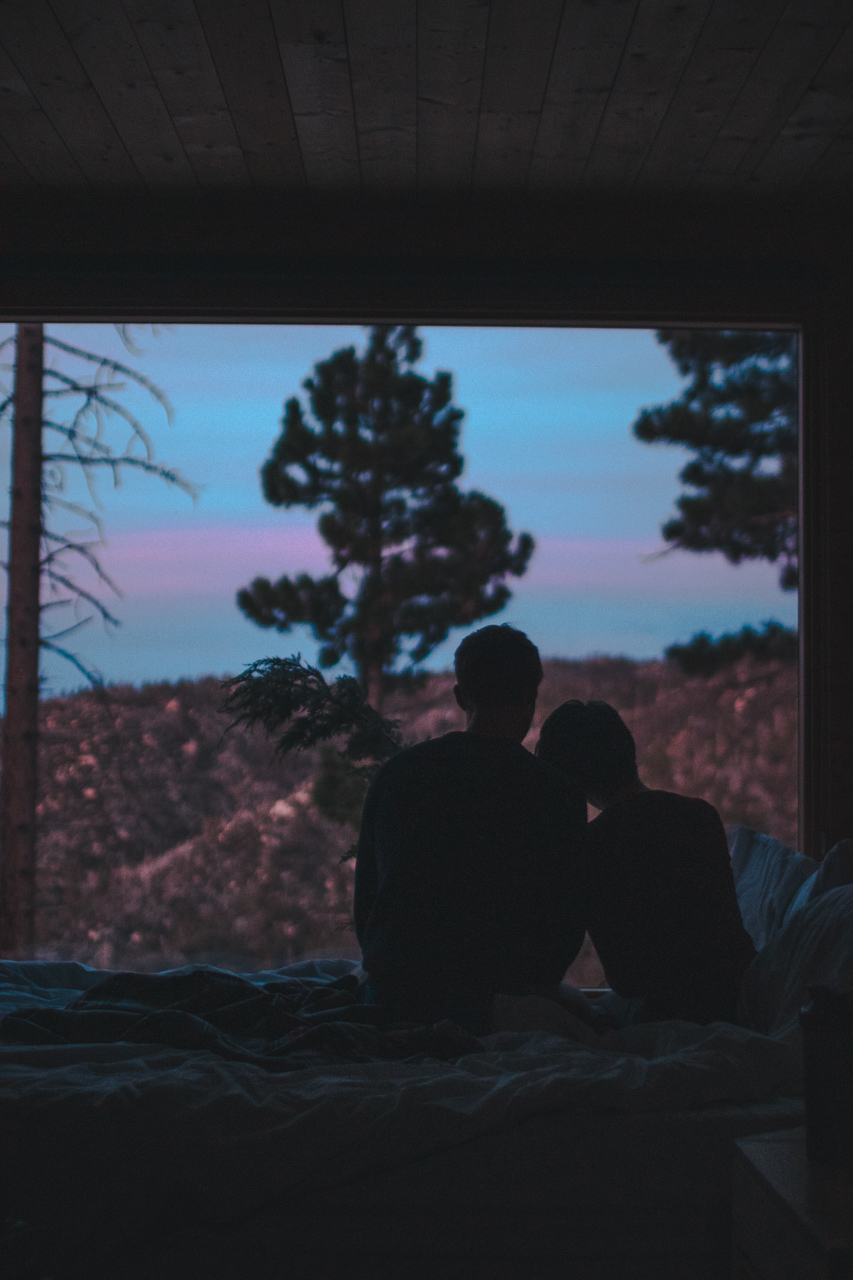
March 2023
Regulus
On March 5th, while the moon is in it’s waxing gibbous phase, you’ll be able to spot the star Regulus, one of the brightest stars in the sky and one of those in the constellation of Leo, near the moon’s lower right quadrant.
Full Moon
On March 7th there will be a full moon—most easily visible in the morning around 8 AM on the East coast, and 5 AM on the West coast. This full moon is known by the Dakota tribe as the “Worm Moon” in reference to a kind of beetle larvae that crawls out of the trees this time of year.
Equinox
On March 20th, we will reach the equinox, the day when daylight evens out so we have an equal number of light hours as we do dark—and this is the official start of Spring.
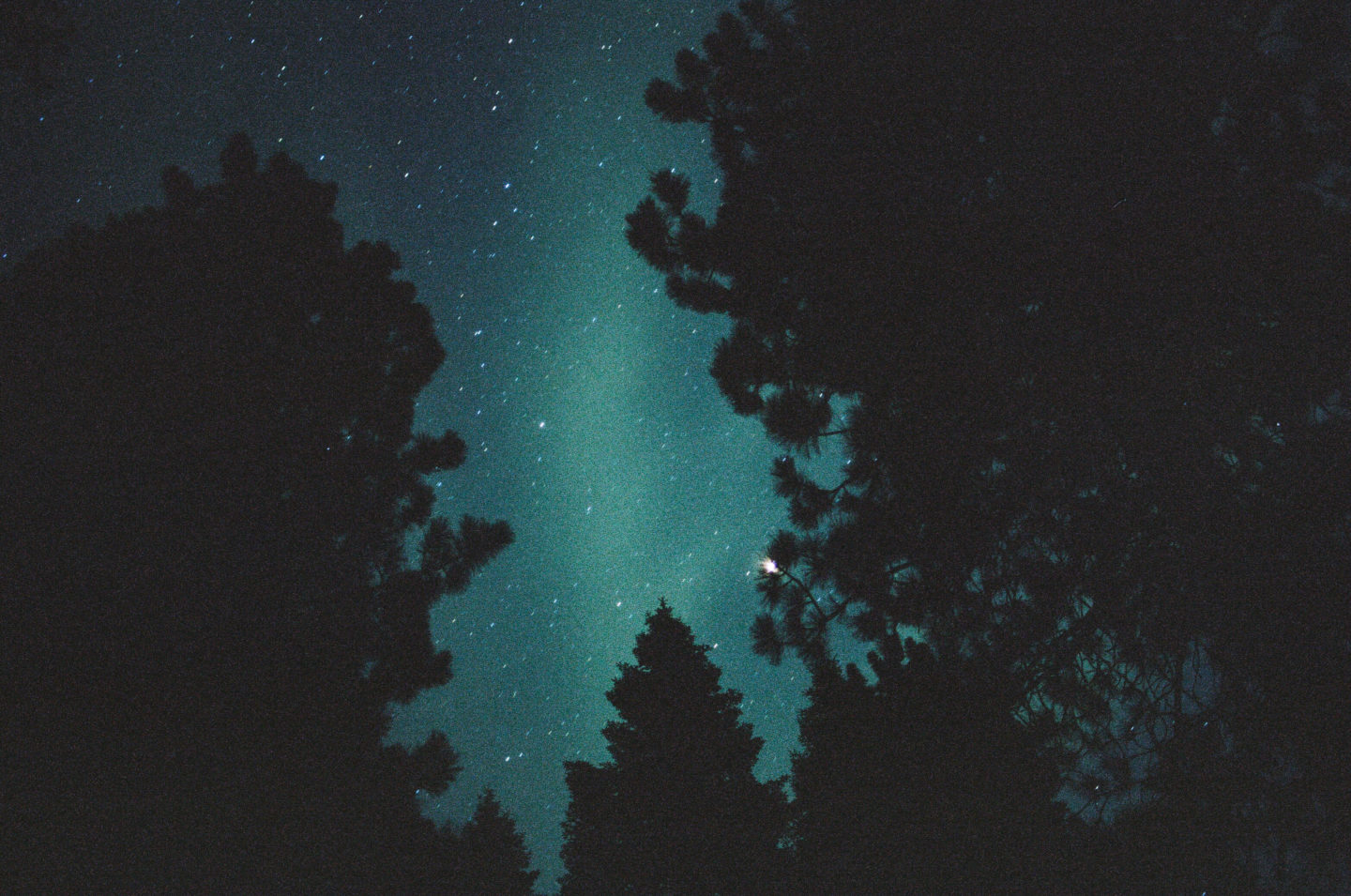
February 2023
Comet C/2022 E3 (ZTF)
On February 1st, comet C/2022 E3 (ZTF) will be the closest it’ll be to earth in it’s path—meaning it will be the brightest and easiest to see as well.
Full Moon
On February 5th, a full moon will light the sky through the night. This moon is known as a Snow Moon, as this time of year is typically when snowfall is heaviest during the year.
New Moon
If you escape to nature on February 20th, the moon will step aside allowing for more stars and galaxies to be visible in the sky.
January 2023
Quadrantids Meteor Shower
Keep your eyes peeled for the Quadrantids Meteor Shower, with up to 40 meteors per hour soaring through the skies at its peak. This meteor shower will be visible after midnight between January 1st-5th, but peaks on January 3rd and 4th. To spot the meteors, look first for the constellation Bootes.
Full Moon
On January 6th, a full moon will light the skies over Getaway. This full moon reaches it’s greatest illumination at 11:09 PM EST, so you can enjoy a long evening around the campfire and get a nice look at the moon before heading into your cabin for a great night’s sleep.
New Moon
On January 21st, the moon will reach it’s new moon phase, which means you won’t be able to see the moon, but you won’t have any light reflecting off the moon to obscure your view of constellations, stars and galaxies. This would be a great time to pull out a pair of binoculars or a telescope.
Mercury at Greatest Western Elongation.
January 30th is the best time to view Mercury as it will be at its highest point above the horizon in the sky. Look to the east just before sunrise to spot the gray planet.
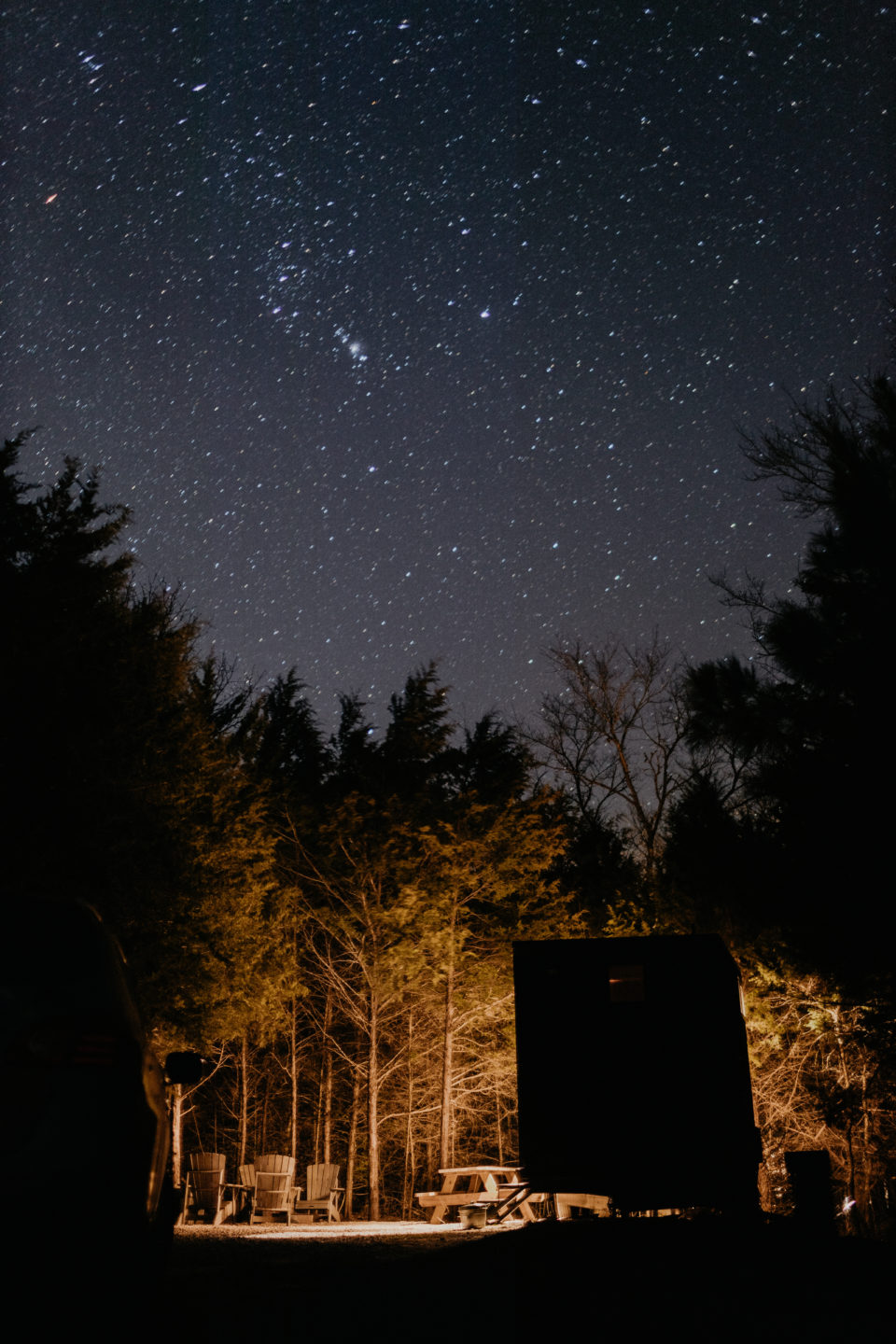
December 2022
Mars in Opposition to The Sun
The first think you can look out for is Mars. Mars will be the closest it gets to Earth all month long, and since it is in Opposition to the Sun, Mars will be illuminated and easy to see and photograph each night. Look for it’s rust-orange color to confirm you’ve found it.
The Geminids Meteor Shower
For a real treat, look to the skies to catch The Geminids Meteor Shower between December 7th-17th. This annual meteor shower is one of the most popular in astronomy circles because it consists of up to 120 multicolored meteors per hour during its peak (between the night of December 13th and the morning of the 14th this year). The meteors appear in the sky near the constellation of Gemini, identified by first looking for Orion, which looks like a big hour glass. From there, Gemini is Northeast of Orion, in between the Taurus and Cancer constellations. This meteor shower is best viewed after midnight, so enjoy a slow evening chatting around the fire and take a peak into the sky before heading in for a great night’s sleep.
Looking for more wisdom from the stars? Check out our collaboration with The Cosmic Latte where their team outlined the best ways to spend your Getaway based on your moon sign.
